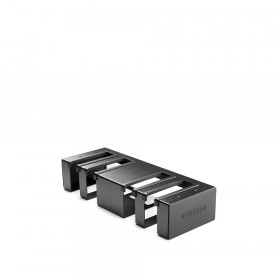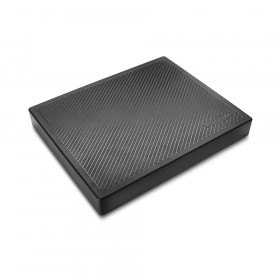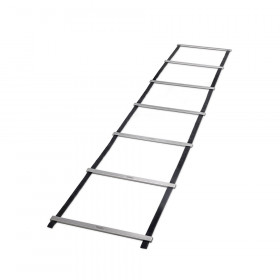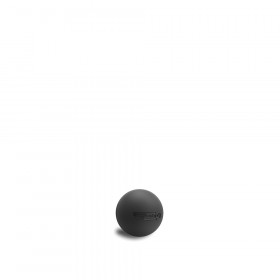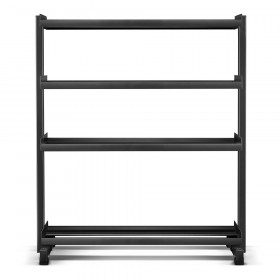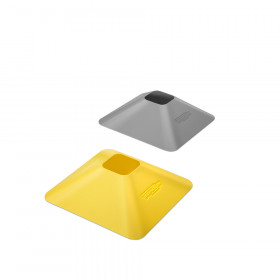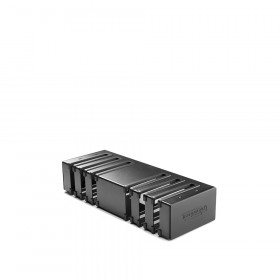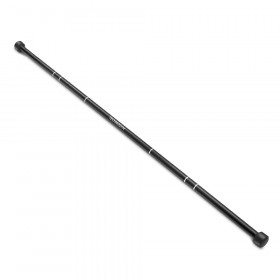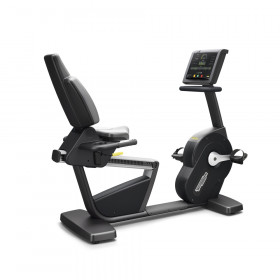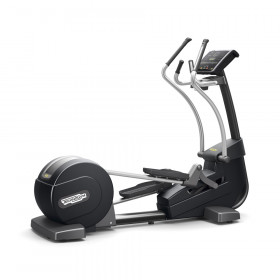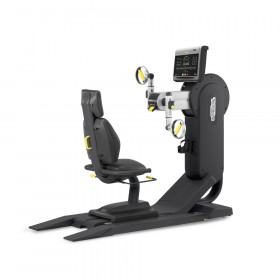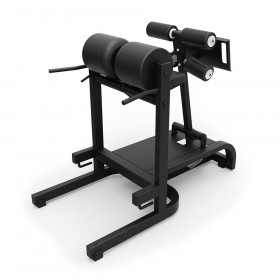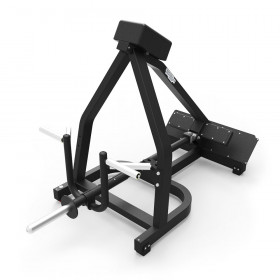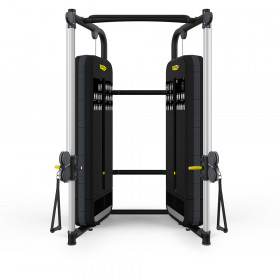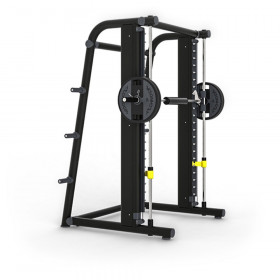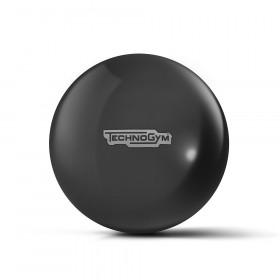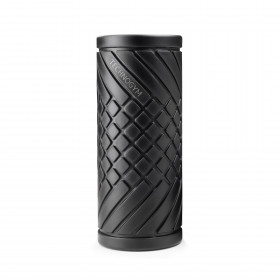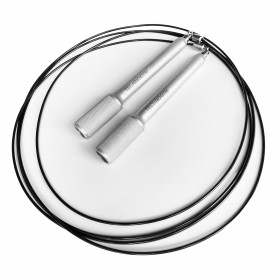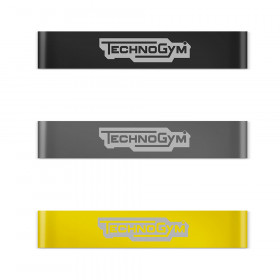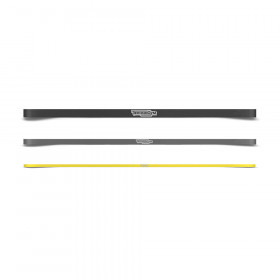High-energy motivational instructors, invigorating music and visualisation come together to make indoor group cycling classes both fun and effective. Group cycling has no complicated moves to learn to frustrate participants. The ability to work at your own pace means everyone can get the best out of the session regardless of how fit, flexible or coordinated they are. You don’t even need to know how to ride a road bike: simply saddle up, set the resistance to the level that's right for you, and let your instructor guide you through an incredible ride.
Group cycling classes makes riding a stationary bike more fun by adding variety and visualisation into your workout. A motivating group setting, energising music and inspiring instructors make group cycling an incredible experience. Whilst you don’t need any special sports wear to get started, investing in padded cycling shorts and tops made from moisture dispersing fabric will make riding more comfortable, and help you to get the most from your workout.
Work out intensity is varied throughout the class by changing body position, pedal speed, and resistance when instructed to do so by the instructor. The music is used to motivate you to keep your energy up and push yourself to the max. Group cycling classes can burn up to 900 calories over a 75-minute workout!
Aside from the group energy, one of the things that makes indoor group cycling classes so much better than regular stationary cycling is the bikes themselves. Bikes, such as the Technogym Group Cycle, are equipped with a weighted flywheel in the front that picks up speed as you pedal. The seats and handlebars are adjustable, so you feel like you're riding on a real bike.
The Group Cycle is ideally suited to the group cycling class. It combines Italian cycle racing tradition, biomechanics accessible to everyone, and an Italian design inspired by cycle racing. The result is a unique design with exceptional fit and an exquisite attention to detail. Technically it has a fixed gear, with the flywheel and pedals dependent upon each other, and a mechanical-type resistance that permits you to vary the intensity of your training session gradually and safely.
Wearing a heart monitor during a group cycling session will help you get more out of your workout. With the Group Cycle Wireless Console, a wireless device specific for Technogym Group Cycle indoor bikes, you can get feedback during and after exercise using parameters such as heart frequency, speed, distance and calories consumed.
The cadence (the speed at which the pedals turn) is an important principle of indoor cycling. Pedalling at a higher rate expends more energy than pedalling at a lower rate with the same resistance. The optimal cadence is between the 80 to 110 RPM for normal cycling
There are four different cycling positions, which are easy to learn. The multi-grip handle bar on Group Cycle makes selecting the corresponding hand positions smooth and simple:
Seated Flat
Hand Position 1 or 2: 80–110 rpm (cadence)
The most basic movement, it is performed in the saddle and the resistance is set low as if riding on flat ground. The Seated Flat helps build strength, stamina and a strong fitness base.
Seated Climb
Hand Position 2: 60–80 rpm
The Seated Climb challenges your lower body, targeting the gluteals and hamstrings for strength, toning and definition.
Standing Flat
Hand Position 2: 80–110 rpm
The Standing Flat is an upright, standing run performed with light to moderate resistance. This uses core muscle groups to stabilise the body, improve leg speed and increase endurance.
Standing Climb
Hand Position 3: 60–80 rpm
The Standing Climb is an out-of-the-saddle hill climb used to strengthen and define leg muscles, particularly the quadriceps.
In addition to the cycling positions there are two advanced cycling techniques, which are designed to raise the heart rate to up to 95% of its maximum capacity. These are:
Jumps
Hand Position 2: 80–110 rpm
Jumps are performed by transitioning in and out of the saddle in a smooth, controlled movement. Jumps develop overall strength, timing and balance by utilising the muscles used to shift from the seated to standing position and back.
Sprints
A Sprint is an advanced move in which riders go at an "all-out" pace for about 30 seconds having built up significant resistance against the fly wheel. The movement starts in a Seated Flat, Hand Position 2 or 2.5 with medium resistance and pedalling at an intensity that requires a moderately hard degree of effort.
The resistance is turned up so it becomes harder to pedal at which point the rider jumps out of the saddle for 5 seconds and uses body weight, position, momentum and determination to power through the heavy resistance to build up speed again. They then settle back into the saddle quickly, and maintain a high rate of pedalling for the remainder of the sprint effort, building on the momentum and maintaining smooth pedal strokes. When the sprint is over there is a period of active recovery for 1.5-3 minutes pedalling at a reduced rate.
Tips for indoor group cycling
If you decide you’d like to give indoor group cycling a try, here are a few helpful guidelines:
Adjust the bike so it works for you
Having the seat pushed too far forward or back can make all the difference in your comfort level. Ask the staff for assistance if necessary and adjust the seat, handlebars, and height accordingly. The new setting up system on Group Cycle lets users adjust seat height, fore/aft position and handlebar height in a smooth single motion.
Stay hydrated
Indoor group cycling is intense and consequently you are likely to sweat profusely. Therefore, always bring a water bottle to class (indeed, you should have water with you whenever you exercise). A sports bottle with a pull top works best, so you can take frequent sips while you ride. Group Cycle multi-grip handle bar has a convenient water bottle storage compartment. A small towel is also a good idea (Group Cycle also has a towel holder behind the seat for rider comfort).
Pace yourself
Indoor cycling is especially good for people who have joint problems or trouble with weight-bearing exercise. However, classes can be high energy and vigorous, therefore remember to go at your own pace (particularly if you are new to exercise).
Focus on your posture
Relax your upper body and hands, and try to avoid clenching your shoulders and clinging to the handlebars. Your hands should be soft and shoulders loose, with your neck long and back straight. Distribute your weight so that it feels like the majority of it is in your feet and legs rather than your hands. Make sure your core is engaged.
Stretch afterwards. Your hips and quads will really be feeling your work out. Take the time to stretch either on or off your bike so that you avoid any future injuries.

